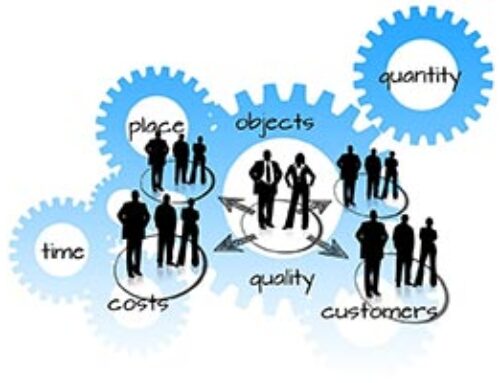 ……This Week in HealthCare
……This Week in HealthCare
By Fred Binczewski | MHA fredb@uprisecg.com | Click Here to download this article (pdf).
April 5, 2021
3D Printing – Opportunities and Challenges for Healthcare
In this issue of …This Week in HealthCare, we will discuss the ever evolving opportunities and responsibilities that 3D Printing has brought to all industries, but in particular, to the healthcare environment. We will also pinpoint some of the challenges that this type of technology has brought to the working and innovative governing bodies, drawing both positive and negative conjecture opinion. Also, we will look at the impact that the covid-19 pandemic has enhanced and brought new collective capabilities and multi uses for 3D Printing.
Let’s begin by establishing a definition for 3D Printing. Axial3D describes this as,”3D Printing (also referred to as additive manufacturing) is the method of creating physical objects from a digital file by adding multiple layers of a material, or multiple materials to build a single structure. The structure is based on the input of a computer-aided design file, in a format compatible with the 3D printing hardware. The technology’s origins can be traced back to as early as 1983 when it was first invented by Chuck Hull, co-founder of 3D Systems. Since then this concept has evolved to include 15 methods or technologies of combining these layers, all commonly referred to as 3D printing.”1 How big is this market? It is estimated to be a cumulative opportunity worth $100B+ by 2025 in 3D Printing and related technologies, impacting 500 companies, spread across 75+ technologies and 35+ markets.2
With this as a base, let’s discuss the implications of 3D Printing as it pertains to healthcare. The following shows healthcare 3D Printing Existing Revenue Sources vs New Revenue Sources:
Healthcare 3D Printing
| Existing Revenue Sources | New Revenue Sources |
|---|---|
| Pharmaceutical Drug Delivery Market | Medical Exoskeleton Market |
| Diagnostic Imaging Services Market | Digital Diabetes Management Market |
| Patient Lateral Transfer Market | Dental Printing 3D Market |
| Home Healthcare Market | Breast Cancer Liquid Biopsy Market |
| Medical Supplies Market | Medical Wearables Market |
3
The market for healthcare medical 3D printing is currently estimated to be worth $1.25 billion. By 2027, the market value is set to grow to $6.08 billion.4 It is obvious that the market potential for this technology is prolific. Healthcare has straddled this technology to meet the challenges in several key areas. First and foremost, healthcare technology is utilizing 3D Printing to design Orthopedic Implants or printed medical devices to replace a missing bone or joint. These can include spinal, knee, hip and skull implants. This by far presently represents the majority of this technology utilization. By the end of 2019, it’s estimated that over 600,000 were produced with 3D printing. By 2027, this number could increase to 4 million.5
Secondly, patient specific and personalized anatomical modeling is a requirement for pre- surgical planning. Utilizing 3D Printing helps surgeons evaluate better treatment decisions and plan their surgeries more accurately. The process begins by taking CT or MRI scans. The scans are then analyzed and modified to remove undesired areas and keep the regions of interest (a process known as segmentation). Bones, vessels and solid organs all need to be modeled in different ways. Once the digital model is created, it is converted into an STL file format, prepared for printing and sent to a 3D printer.6
Thirdly, medical and dental devices such as prosthetics, braces, dentures, restorations and clear aligners are significantly benefitting from 3D Printing. One of the key benefits is the low cost personalization for any patient thus driving the adoption of 3D printing for medical & dental devices. A 3D printer requires only a digital file to produce a device, which makes it possible to customize a design more easily and produce many different devices in one batch.7 Conversely in years past, traditional manufacturing such as molding would require special tooling for each custom device, making production costs economically unrealistic. BY the utilization of 3D Printing, prosthetic limbs are becoming much more affordable and faster to produce. Furthermore, the technology can be used to create prosthetics tailored to the patient’s anatomy, thereby improving the fit of the prosthetic. One of the major opportunities for enhanced patient 3D Printing delivery occurs with prostheses designed for children. Since they can outgrow devices quickly, in many cases they will use several larger versions in their formidable years. 3D printing not only represents a lower cost overall but is a more versatile way of manufacturing these devices.
There are certainly challenges to this technology and the environment of its operation and design. One we will discuss here is the reimbursement phase for healthcare facilities. We may think that setting up a 3D Printing Lab in a hospital is a good idea. For any healthcare facility, reimbursement is a critical part of the Revenue Cycle (described in earlier …This Week in HealthCare articles), and suggests the reimbursement payment that insurers provide to a hospital, doctor, diagnostic facility or other healthcare providers for providing a medical service. Usually, this represents the cost of all or part of patient provided services. At the same time, while 3D printed devices approved by the FDA may meet reimbursement guidelines, 3D modeling of a patient’s anatomical requirements and professional fees do not meet reimbursement guidelines. This is especially true during these covid times where procedures, diagnoses and patient care has brought on turbulent times and situations in healthcare organizations seeking “clean billing and reimbursement” at the same time of providing the best care possible to all patients.
To facilitate this, governing bodies such as the American Medical Association (AMA) has approved four Category III Current Procedural Terminology (CPT) codes for 3D-printed anatomical models and personalized 3D-printed cutting or drilling tools. These four codes, 0559T, 0560T, 0561T and 0562T (CPT), will allow healthcare organizations to enable reimbursement for 3D Printing services through accurate Revenue Cycle system and claim processing.8 Finally, we have only begun to realize the extent to which 3D Printing will transform our lives for the future. It is now an essential part of the mechanics of healthcare and its responsibility to providing cutting edge solutions and excellent patient cycle care opportunities.
In closing, we at ….This Week in HealthCare and Uprise Consulting Group would like to thank all healthcare workers in this covid pandemic time even though some of the research suggests we are at a turn for the better.
Stay safe and diligent. See you all next time…….This Week in HealthCare
References
1 axial3D
2, 3 Markets and Markets
4, 5, 6, 7 AMFG
8 3D Printing Media Network
To learn more about how we can help you with this topic or other healthcare questions please send us a message at the following: info@uprisecg.com
Uprise Consulting Group, Inc., Eliminating Denials Today, Tomorrow and into the Future.
Together, we are paving a road for the Best Patient Experience. Learn more at www.UpriseCG.com
Visit us on LinkedIn, Instagram,Twitter and Facebook





